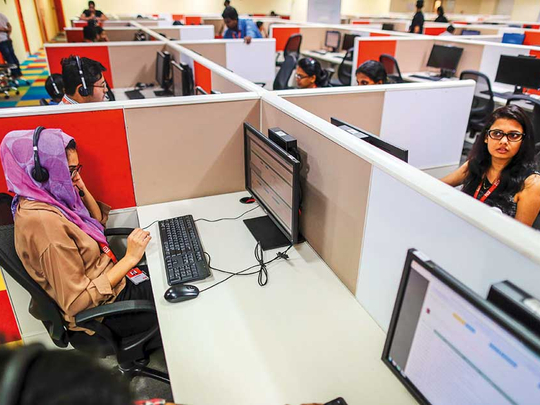
Bengaluru: The controversial H-1B visa programme, widely criticised for costing American workers their jobs, has actually provided economic benefits for both the US and India, according to a new study from researchers at the Center for Global Development and the University of Michigan.
The combined incomes for the two countries as a result of the US visa programme rose by about $17.3 billion or 0.36 per cent, and the total IT output from both countries rose by about 0.45 per cent in 2010, say researchers Gaurav Khanna of the Center for Global Development and Nicolas Morales at the University of Michigan.
While recognising negative repercussions for some workers, the study said that on the whole US-born employees were wealthier by about $431 million in 2010 because of the programme.
“The average worker in each country is better off because of immigration, and US native workers have made big gains because of the H-1B visa programme,” said Khanna.
The research report titled “The IT Boom and Other Unintended Consequences of Chasing the American Dream” is an in-depth look at the H-1B visa programme and its impact on the US and Indian economies since the early 2000s. The visa programme allows companies in the US to employ skilled foreign workers in speciality occupations.
India’s outsourcing companies, including Infosys Ltd, Tata Consultancy Services Ltd and Wipro Ltd, have been the leading recipients of H-1B visas, which they use to send employees to work at customer sites in the US The programme has been instrumental in the rise of India’s $155-billion IT services industry.
But the approach has come under fire in recent years in the US, including from President Donald Trump.
In April, his administration announced new measures to curtail the programme’s use and eliminate what he called “widespread abuse.”
The programme is often criticised in India too, for causing a brain drain. But the authors took issue with that assertion also, arguing that Indian workers migrating to the US have led to the dramatic expansion of India’s own technology industry and contributed to a growing skilled workforce in the country.
More students switched to computer science and engineering fields because of better prospects and those who did not migrate helped boost the Indian IT services industry. Some H-1B visa holders returned with additional knowledge to improve the sector.
The increase in IT sector productivity allowed India to eventually surpass the US in software exports, the researchers said.
Because immigration led to better technology being built, the overall productivity of other sectors increased and consumers of computer-related goods benefited from better software and hardware prices, a 1 per cent decline for US IT products and a 7.4 per cent decrease for Indian products.













